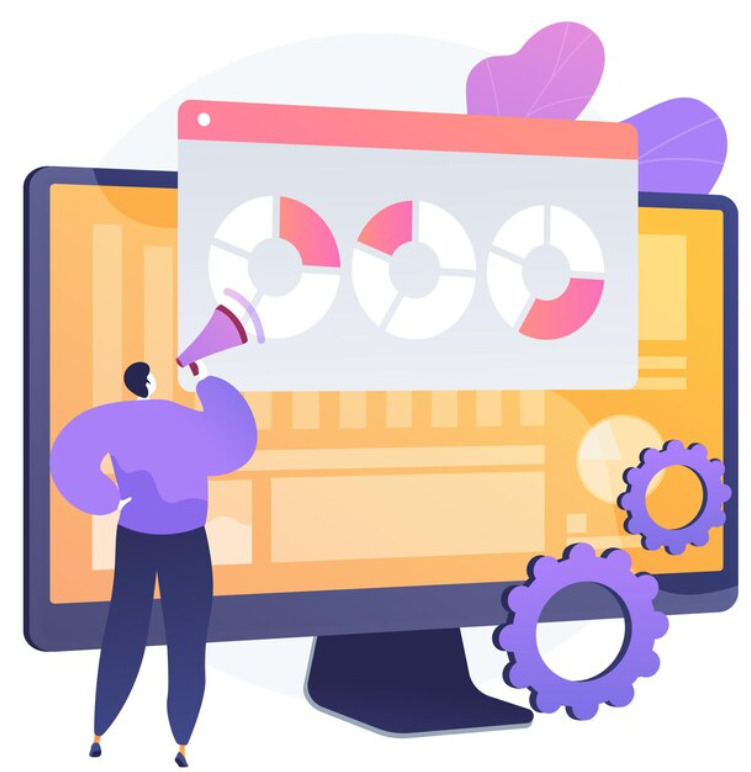In modern HR management, vacation tracker apps have become indispensable tools for managing employee leave, tracking Day Off requests, and maintaining operational balance. These digital systems streamline leave management by automating workflows, reducing administrative errors, and providing real-time visibility into employee availability.
However, one of the most powerful yet underutilized features of vacation tracker apps lies in their reporting capabilities. Detailed, data-driven reports give HR leaders and managers valuable insights into patterns, trends, and workforce behavior, helping them make smarter decisions about staffing, policies, and productivity.
Day Off App, the #1 tracker for PTO, vacations, and absences, stands out as a leading solution in this space. With quick setup, customizable policies, and seamless integration with Google Calendar, Outlook, and Slack, Day Off App simplifies leave tracking and reporting while giving organizations actionable insights into their workforce dynamics.
Below are nine detailed tips on how to make the most of reporting features in your vacation tracker app, specifically when managing Day Off data and optimizing HR strategy.
Understand the Basics of Reporting Tools
Before diving into analytics and forecasting, it’s essential to understand the foundations of your vacation tracker’s reporting system. Familiarize yourself with available report types, such as summary reports, individual leave records, trend analysis, and absence forecasts.
Learn what each report measures, how to generate them, and how filters can help refine data (e.g., by department, role, or time period). For Day Off tracking, key metrics might include frequency of short-term absences, unused leave balances, and team-level availability.
Understanding these basics ensures that HR teams can extract accurate, relevant insights rather than being overwhelmed by raw data.
Customize Reports for Specific Organizational Needs
No two organizations have the same HR priorities or leave policies. That’s why customizable reports are a vital feature of modern vacation tracker apps.
Tailor reports to reflect your company’s specific needs, such as identifying departments with higher Day Off frequency, monitoring overtime trends, or analyzing how public holidays affect leave requests. Custom reports can also help you comply with local labor laws by tracking accrual rates, carryovers, and time-off utilization.
For instance, a company with a remote workforce might generate reports comparing leave patterns across regions, while a customer service business may focus on ensuring sufficient coverage during peak hours.
Customizing your reports allows you to focus on insights that drive actionable decisions rather than generic summaries.
Schedule Reports for Consistent Monitoring
Regular reporting keeps HR managers proactive rather than reactive. Instead of waiting for annual reviews or mid-year audits, schedule recurring reports, weekly, monthly, or quarterly, to stay continuously informed about leave trends.
Automated report scheduling helps HR teams identify patterns early, such as rising absenteeism in certain departments or employees who consistently avoid taking their allocated Day Offs (a potential sign of burnout).
For example, setting up a monthly “Day Off Summary Report” gives managers a snapshot of staff availability and helps ensure balanced workloads. This habit builds consistency, strengthens forecasting accuracy, and supports smoother operational planning.
Utilize Historical Data for Forecasting
Historical leave data holds powerful predictive value. By analyzing past Day Off patterns, HR can forecast future trends and prepare accordingly.
For instance, if your reports show that July and December are peak vacation periods, HR can adjust project timelines, hire temporary staff, or stagger approvals to maintain coverage. Similarly, forecasting can reveal potential issues like underutilized PTO, which often correlates with lower morale and higher turnover risk.
Using Day Off App’s analytics tools, you can easily visualize these trends through charts and dashboards, helping you plan ahead, avoid scheduling conflicts, and support healthier work-life balance initiatives.
Integrate Reporting with Other Calendar and HR Systems
Integration is key to unlocking the full value of your vacation tracker’s reports. Connecting your system to other HR software, payroll systems, and calendars ensures a holistic view of workforce management.
For example, integrating with Google or Outlook Calendar allows automatic updates when Day Offs are approved, giving teams real-time visibility into availability. When combined with HRIS data, these reports can correlate attendance with performance metrics or productivity levels.
This integration reduces administrative work, aligns departments, and provides leadership with comprehensive, cross-functional insights, all from a single dashboard.
Prioritize Data Accuracy and Integrity
Accurate data is the foundation of effective decision-making. Inconsistent or outdated leave records can lead to incorrect reports, which in turn may cause compliance issues, staffing shortages, or employee dissatisfaction.
Ensure that all leave entries, especially Day Off requests, are correctly recorded and updated in real-time. Encourage employees to use the app instead of informal communication channels for requesting time off.
Day Off App, for instance, automatically syncs data across all devices and updates leave balances instantly after approval, minimizing errors and discrepancies. Regular data audits further ensure that reports reflect true, current information.
Train Managers and HR Teams to Interpret Reports
Reports are only as valuable as the people interpreting them. HR professionals and managers should be trained to understand data insights, not just read numbers.
For example, a report showing frequent short-term absences might indicate personal issues, burnout, or lack of engagement. High unused PTO balances might signal overwork or poor communication about policies.
Training sessions should cover how to extract key insights, identify patterns, and use the data to make meaningful changes in scheduling, staffing, or policy design. When managers understand how to read between the lines, reports transform from static data into strategic intelligence.
Maintain Confidentiality and Data Privacy
Leave reports often contain sensitive information about employee health, family circumstances, or personal situations. HR must handle these details with utmost discretion.
Restrict access to detailed reports to authorized personnel only and ensure compliance with data protection regulations like GDPR or CCPA. Vacation tracker apps such as Day Off provide role-based access controls, audit trails, and encryption protocols to ensure security.
Maintaining confidentiality not only protects the organization legally but also builds employee trust, a critical factor in a healthy workplace culture.
Leverage Reports for Policy Review and Improvement
The most powerful use of reporting is to drive continuous improvement. Analyze leave data to identify whether current policies are fair, effective, and aligned with employee needs.
For example, reports may reveal that employees rarely take time off due to heavy workloads or unclear approval processes. HR can then respond by adjusting policies to encourage regular breaks or simplifying the approval workflow.
Data-driven insights ensure that policies evolve with the workforce, promoting fairness, transparency, and employee satisfaction. Over time, this approach enhances both productivity and retention.
Why Reporting Matters in Day Off Management
Reporting isn’t just an administrative feature, it’s a strategic HR asset. It empowers organizations to:
-
Maintain optimal staffing levels.
-
Predict future leave demands.
-
Identify employee well-being trends.
-
Enhance policy compliance and fairness.
-
Strengthen communication between HR, management, and staff.
By embracing reporting tools like those in Day Off App, companies can transform leave management from a logistical challenge into a data-driven strategy for better workforce planning.
Common Reporting Mistakes to Avoid
Even with the best tools, errors in report management can reduce accuracy or create confusion. Avoid:
-
Ignoring customization: Generic reports might not provide actionable insights.
-
Failing to validate data: Always verify that leave entries are complete and correct.
-
Over-restricting access: While data privacy is essential, managers need appropriate visibility to plan effectively.
-
Not following up: Reports are valuable only if findings lead to policy or operational improvements.
Effective reporting requires balance, between automation and human judgment, accessibility and confidentiality, and short-term tracking versus long-term strategy.
Frequently Asked Questions (FAQ)
Why are reports important in vacation tracker apps?
Reports transform raw data into meaningful insights. They help HR professionals understand leave trends, monitor absenteeism, ensure compliance, and forecast staffing needs, ultimately improving both productivity and employee well-being.
How often should HR generate leave and Day Off reports?
It depends on your organization’s size and operations. Most HR teams benefit from monthly summary reports and quarterly trend analyses. Regular reporting ensures early detection of issues like excessive absenteeism or burnout risks.
What types of reports are most useful for managing Day Off requests?
Key reports include:
-
Absence Summary Reports (for tracking frequency and duration)
-
Team Availability Reports (for planning coverage)
-
Accrual and Balance Reports (for financial forecasting and compliance)
-
Trend Analysis Reports (for identifying seasonal or behavioral patterns)
Can vacation tracker apps integrate with payroll and HR software?
Yes. Leading platforms like Day Off App integrate seamlessly with payroll, attendance, and HRIS systems. This ensures leave data automatically syncs with salary calculations and performance records, reducing errors and duplication.
How can reports improve employee satisfaction?
Transparent leave tracking and fair approval processes increase trust. Reports also help HR detect overworked employees or teams with low Day Off usage, prompting proactive steps to prevent burnout and improve morale.
What’s the role of data security in leave reporting?
Since leave reports contain personal information, robust security is crucial. Look for apps that offer encryption, access controls, and compliance with data protection laws to safeguard employee privacy.
How can HR teams ensure the accuracy of reports?
Ensure all leave requests go through the tracker app (not emails or chats), conduct monthly audits, and verify that approval workflows are consistent. Automated systems like Day Off minimize human error through real-time synchronization.
How do report insights help in policy development?
Analyzing data allows HR to see whether policies are working as intended. For instance, if reports show low PTO usage, policies might need revision to encourage employees to take regular rest days. Data helps guide fair, evidence-based decisions.
Can small businesses benefit from vacation tracker reports?
Absolutely. Even small teams can gain valuable insights into staff availability, workload balance, and operational planning. Cloud-based solutions like Day Off are scalable and ideal for small-to-medium enterprises seeking efficiency without complexity.
What happens if data in the app is outdated or incomplete?
Inaccurate data leads to unreliable reports, which can affect scheduling, compliance, and trust. Encourage employees to update leave records promptly, and assign HR administrators to monitor data integrity regularly.
How can managers use reports for better workforce planning?
Managers can analyze team calendars, upcoming absences, and trends to anticipate coverage needs. Reports make it easier to assign temporary responsibilities, plan project timelines, and avoid last-minute disruptions.
Do employees have access to their own leave data?
Yes. Most modern vacation tracker apps, including Day Off, allow employees to view their leave balances, request history, and pending approvals, empowering them to plan time off more responsibly.
What’s the best way to introduce report-based decision-making in HR?
Start small. Use reports to solve immediate problems (like scheduling conflicts), share insights during management meetings, and gradually build a data-driven culture. Over time, reports will become an integral part of strategic HR planning.
How do Day Off reports stand out compared to traditional tracking methods?
Day Off offers real-time updates, cross-platform integrations, customizable dashboards, and detailed analytics, all in one place. This eliminates manual effort, enhances transparency, and provides richer, actionable insights for HR professionals.
Conclusion
Vacation tracker apps like Day Off have revolutionized how organizations handle employee leave and Day Off requests. Their reporting capabilities go far beyond tracking time off, they provide critical insights that shape policies, improve workforce planning, and foster a culture of fairness and transparency.
By understanding the data, customizing reports, ensuring accuracy, and using insights for improvement, HR professionals can elevate leave management from a simple administrative function to a strategic pillar of organizational success.
With Day Off App, you’re not just tracking time, you’re empowering smarter HR decisions and creating a healthier, more balanced workplace.











